Initially, I am enthusiastic about setting out to walk the city (right after my delicious breakfast of eggs and salmon)...
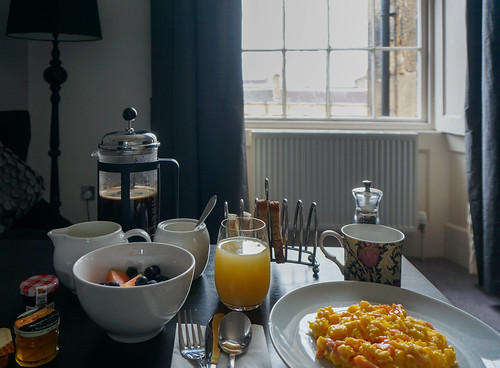
I'm near the West End, so I begin there, cutting through the Kelvingrove Park right up the street from me. It's a fine park, in the way that all green spaces in big cities offer some respite and quiet. There is a herbaceous border which definitely could use some TLC, but it still produces an abundance of geraniums and a few poppies and lots and lots of inconsequential Queen Ann's Lace.
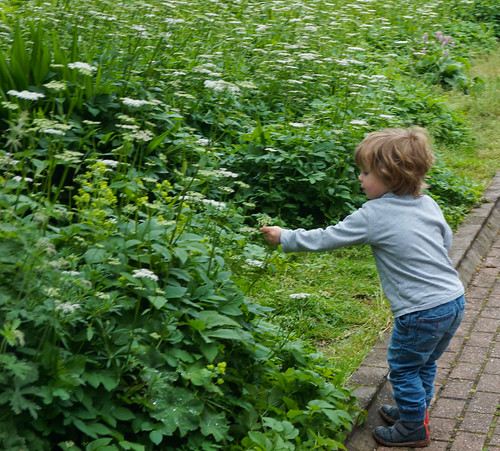
Leaving the park, I walk straight to the blocks that have been called the the cool and funky ones, laden with cafes, shops and eateries.
Well okay, but it's Saturday, late morning and the place is hardly flooded with people.
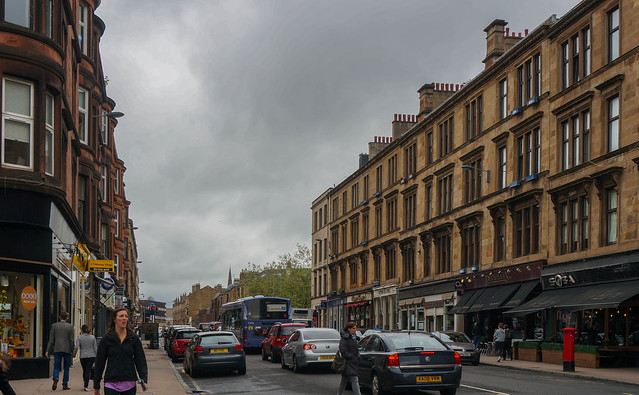
With good reason, in my view. There are a lot of closed storefronts and the ones that are open are... well, funky I guess. Nothing pulls me in, nothing causes me to pause, admire, linger. I walk up the main drag (Byres Road) and I strain my neck at each intersection, but I'm not inspired to use my camera.
There is one shop that I recognize from Brighton -- a children's clothing store and I do make some purchases there (of course I do!), but otherwise, I see no reason to linger.
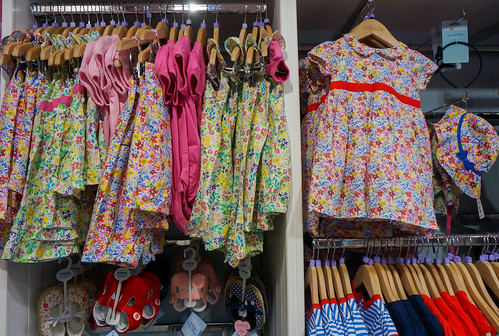
The University of Glasgow, which in many ways probably defines this neighborhood, appears empty now, though it does contain a set of imposing buildings.
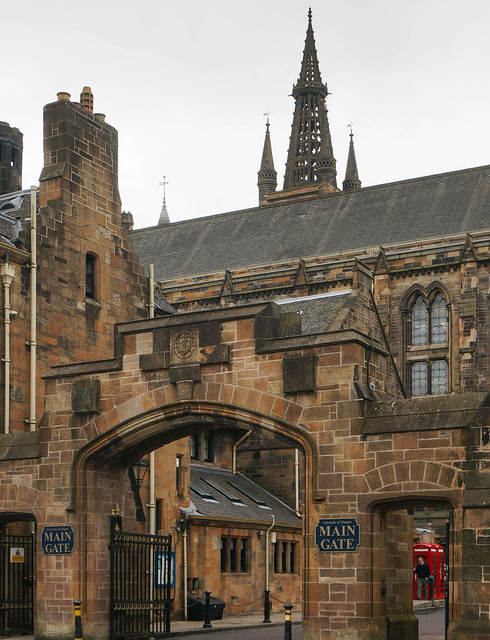
There is one museum that sort of kind of interests me -- it has the interiors (furniture, etc) designed by Glasgow's famous architect and artist, Charles MacIntosh (principally associated with the Art Nouveau movement of the early twentieth century). Unfortunately, you have to take a tour and the next available one isn't for another hour. I shake my head and walk away.
So now what? I'm done with the West End. Onto the belly of the city -- the commercial center that runs north of the two main railway stations.
I reach Buchanan Street (which is blissfully car free). Oh, so this is where the people come to shop! It's packed!
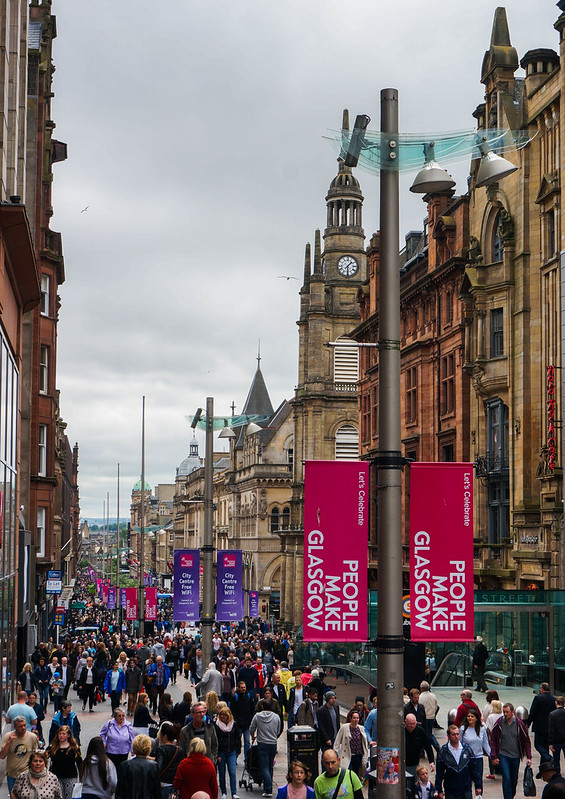
People do make Glasgow. In this shopping frenzy, there is a kind of pleasant vibe, the suggestion being that shopping remains high on people's agendas. That things aren't too lean. That congregating here on a Saturday is enjoyable and in some way rewarding. (The architecture of the buildings lining the streets is some of Glasgow's best.)
I poke into Scotland's good department store, House of Fraser and I even do some small Snowdrop shopping, but I am only mildly pleased to be in stores. And I definitely feel that I have taken in all the important neighborhoods of the city. I am so done with exploring. Tomorrow, I'll have to move further afield.
I know, of course, what's wrong. I'm not engaging life here. I have no one to explain the city to me. The b&b offers only closed doors. I rely on what I see and hear on the streets. It's not enough to overcome the complexities of Glasgow. There are sweet moments, but they're lost in the criss-cross of dark buildings and abandoned retail spaces.
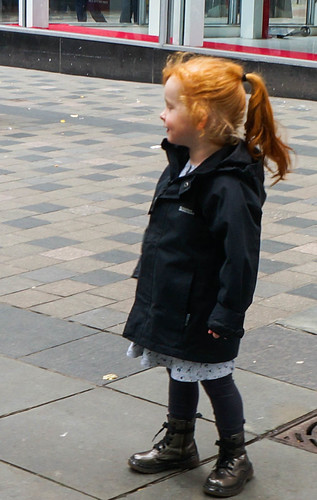
In the evening, I go to a local eatery suggested by my hosts (via the Internet) -- the Gannet. As I mentioned, it's tough to find a spot with an open table (everyone the world over loves to eat out on Saturday night!), so I am glad to have a reservation.
A funny thing happens to the sky -- it opens up in rich blueness! People move outdoors and sip beers in the golden wake of sunlight. Two boys kick around a football..
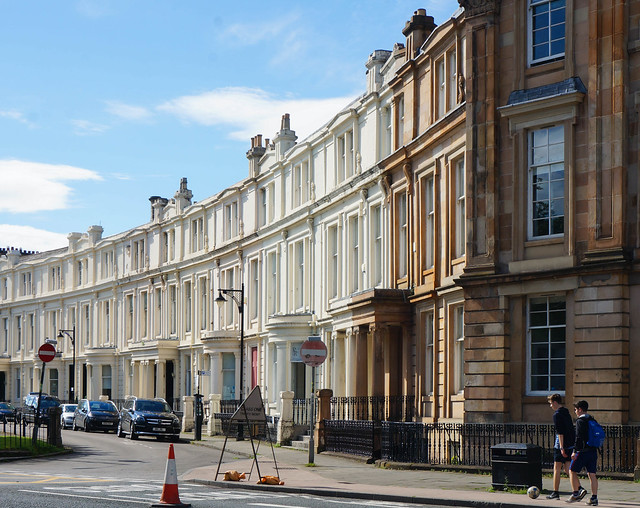
It's all very uplifting, but I am not easily convinced. By tomorrow, the sun will have disappeared, the rains will be back and I will have to face Glasgow, full steam ahead Glasgow, with its dark stone and somber history.
But dinner? Oh, it is amazing! I'm no fool: I order a beautiful spring veggie appetizer right up front...
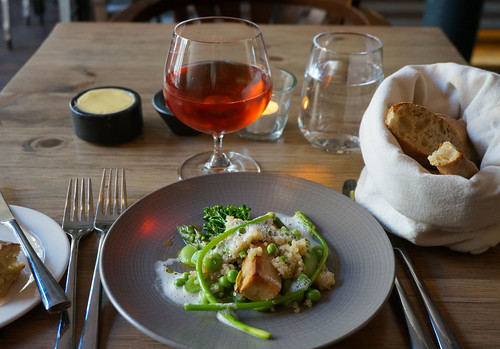
...and then proceed to a pink trout with mussels, smashed jersey royals, and cavolo nero. I asked about cavolo nero -- never heard of it before.
Dark cabbage, the wait person explains.
Well maybe. Think: kale. Either way, the whole dish is extraordinarily good!
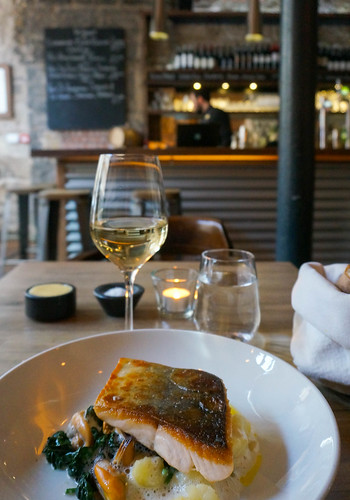
As I stroll back to the b&b, I pass a mostly organic grocer. I walk in, mainly to stock up on snack foods for next week's island trip. (Because I skip lunch and walk a lot, I get hungry. I make do with nuts and dried fruits -- not always easy to find in remote places.) I ask them -- how long have you been here? Oh, two years. Maybe three...
That probably matches the explosion of a new food culture here. I pack up the bags of raisins (from Turkey), nuts (from Moldavia) and the bar of chocolate (from Scotland).
In my beautiful b&b room, I mull over the peculiarities of travel: sometimes you feel you get so close to the soul of a place and sometimes, despite the utter friendliness of the people there (forget the crazy bus dudes who screamed obscenities as the bus rolled by), you feel very much the clueless outsider. I encounter nothing but helpful hands and smiles from the people here -- much as I do in every nook of Scotland. But I'm sure that at the end of my stay in Glasgow, after miles of walking, studying, considering, I'll have to admit that I don't know the city at all.


"McCallum," "Rebus," "New Street Law" - just a few of the great film series filmed in and around Glasgow, maybe if you'd watched them before you went, the city would speak to you in a different way. Paul's cousin's son lives in Glasgow and loves it there.
ReplyDeleteThe photo of the little girl with red hair is adorable. My kin in Nashville have a lot of Scottish blood coursing through their genes. So many of them have this shade of hair and it's stunning! I enjoyed this post.
ReplyDeleteThanks for flagging that term "cavolo nero.” I poked around on the internet, saw that it was also called Tuscan kale, which made me think it might be the same as Lacinato kale, which is the kind of kale Meade started growing from seed after I said I preferred it to curly kale for making kale chips. Turns out it is. Wikipedia says: "Lacinato kale (called cavolo nero, literally "black kale", in Italian and often in English) is a variety of kale with a long tradition in Italian cuisine, especially that of Tuscany. It is also known as Tuscan kale, Tuscan cabbage, Italian kale, dinosaur kale, black kale, flat back cabbage, palm tree kale, or black Tuscan palm. Lacinato kale has been grown in Tuscany for centuries, and is one of the traditional ingredients of minestrone and ribollita.”
ReplyDeleteI also saw this article in The Guardian: "Cavolo nero growers aim to cash in on kale craze/Farmers want to rebrand vegetable as black kale after survey found most shoppers have no idea what it is.” ("Now Lincolnshire farmers who grow cavolo nero want to drop its Italian name and rebrand it as black kale to help its ascent and end what they describe as confusion among shoppers. In a recent survey, only 20% of shoppers knew cavolo nero was a vegetable."
At Wegmans in Buffalo, it's called Tuscan Kale and sometimes Lacinato... it's great!
Delete